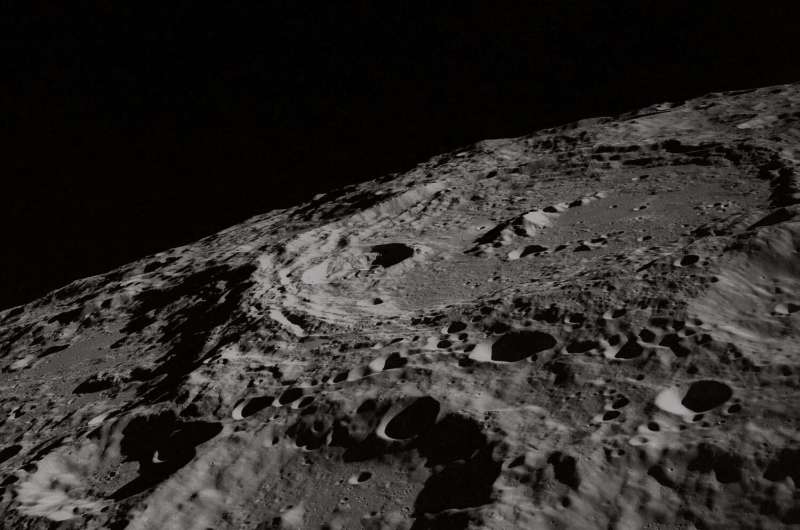December 13, 2022 report
Data from regolith collected by Chang'e-5 suggests there is more hydrogen at higher latitudes on the moon

A team of researchers at the Chinese Academy of Sciences, working with a colleague from Université de Paris, has found that hydrogen concentrations in regolith on the moon are higher in the higher latitudes. They have published their study in Proceedings of the National Academy of Sciences.
Prior research has shown that when the solar wind strikes regolith on the surface of the moon, hydrogen ions tend to stick onto the outer layers of the grainy material. Prior research has also shown that the amount that remains in the regolith tends to hold steady. As hydrogen is deposited, older hydrogen outgasses into space.
But if a meteor strikes the surface, or if there is a moonquake, the older regolith can be buried by new regolith. In such a situation, the older regolith can still outgas, but it cannot be restocked with new hydrogen ions. Thus, its concentration will become lower over time.
Prior research has also shown that some of the hydrogen can bond with oxygen atoms in the regolith to form either hydroxide or water. In this new effort, the researchers found evidence that less hydrogen is outgassed at higher latitudes due to lower temperatures. And that means that there is likely more water available for future moon colonies.
To learn more about the amount of hydrogen, hydroxide and water in lunar regolith, the researchers studied samples collected by the Chang'e-5 lunar explorer in 2020, which were subsequently returned to Earth. Prior research has shown that temperatures at or near the lunar equator average approximately 380 Kelvin where regolith samples from the Apollo missions were collected. Temperatures farther north, where the Chang'e-5 explored, were somewhat lower, averaging 350 Kelvin.
They found that concentrations of hydrogen, hydroxide or water were higher—the sensors on the explorer were not able to tell the difference between them—suggesting that cooler temperatures meant less outgassing. The researchers suggest that at locations even farther north, concentrations of hydrogen are likely to be even higher.
More information: Xu, Yuchen et al, High abundance of solar wind-derived water in lunar soils from the middle latitude, Proceedings of the National Academy of Sciences (2022). DOI: 10.1073/pnas.2214395119. www.pnas.org/cgi/doi/10.1073/pnas.2214395119
Journal information: Proceedings of the National Academy of Sciences
© 2022 Science X Network


















